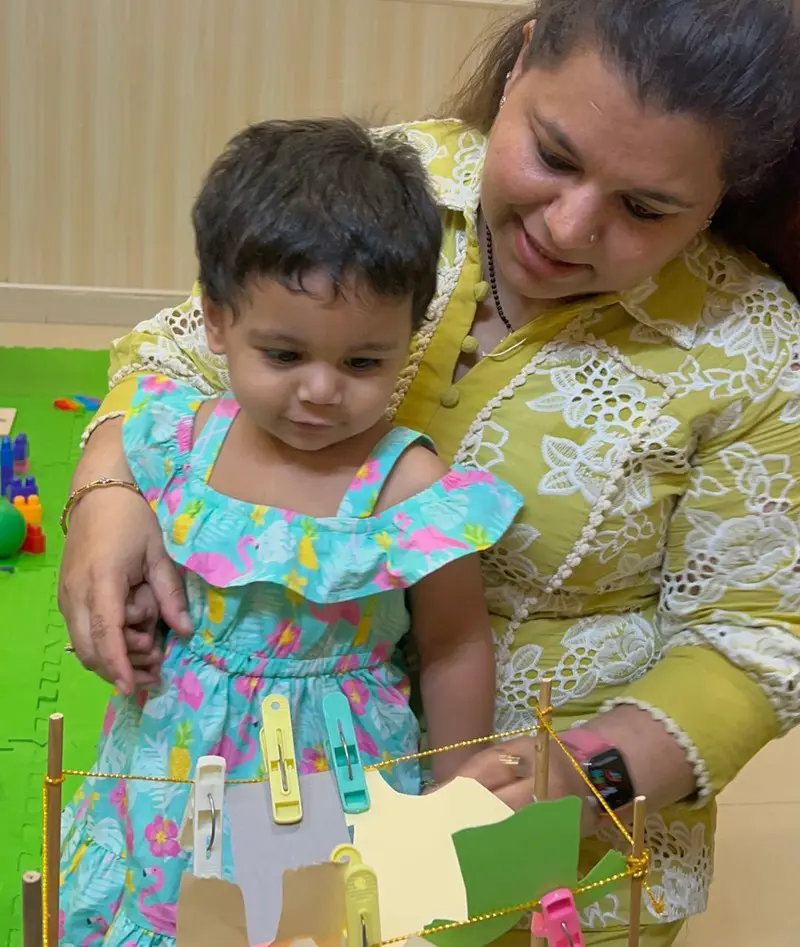Your 5-month-old baby is growing so fast cognitively; much is happening at this age while they learn new functions and surroundings. Having the ability to witness a baby reach most of the critical milestones in life can be quite an adventure and rewarding in itself.
Knowing what should be expected during this period can only help you support their growth in the celebration of progress. Though children develop at their own pace, there are some milestones or developmental changes quite common to this age.
Baby's milestone

1. Physical Growth and Strength
The child's muscles are relatively well-developed at five months. It is supporting itself by the arms on its belly, and it may even roll over from its back to its belly. It can sit with support for its back and neck, which makes it easier for its head to be steady and, hence facilitates the child's viewing actively its environment. This is a typical kind of behavior for a child who is developing hand-eye coordination and in addition, enhancing their alertness towards things surrounding them.
2. Perfect Vision
They have a clearer vision that allows them to see distant things and focus on things more effectively. They easily notice changes in the position of the moving objects through their eyes and probably recognize common faces even from the other side of the room.
They´ll begin focusing on vivid colors and high-contrast patterns. This is a good time to show them pictures or colorful toys. The improved vision also enhances the understanding of depth and distance as they start to reach for things.
3. Social Interaction and Smiling
At this stage, the baby learns to socialize. They smile back more in return for others and love the company of people known to them. They laugh out loud when they get amused at something. They can start showing their feelings through facial expressions.
Babies imitate the sounds they hear and the body movements they see, which somehow makes them attached to the person nearby.
4. Vocalizing and Babbling
At five months, the baby is often experimenting with her voice. She'll coo, babble, and even squawk a bit. These early vocalizations are used purely to practice communicating. Babies like "talking" back and forth with caregivers during play.
Although they can't form words just yet, this stage in language development remains important because babies are already learning about the rhythm and flow of conversation.
5. Improved Hand Coordination
During this period, the infant will now exhibit better coordination of hands and fingers. They can now reach with purpose for the toys and grasp to hold them. They shall transfer objects from one hand to another and enjoy putting them in their mouth to feel it.
It is in this increased level of dexterity that they get to learn of the world through the experience of different types of textures and shapes. These landmarks vary from one baby to another, and the attaining of it takes variable times.
Baby's Height and Weight

At 5 months, infants achieve the most amazing milestones and they are outright adorable. Knowing their average will help you determine if they are thriving. Though growth may differ in different cases, knowing the average gives a good baseline from which you can track your baby's progress.
Girls
Weight: Approximately 11.5 to 16 pounds
Height: Approximately 24 to 25.5 inches
Boys
Height: Approximately 24.5 to 26 inches
Weight: Approximately 12.5 to 17 pounds
Again, these are only averages, and large variations will exist based on genetic background, nutrition in particular, and general health. Regular checkups with your pediatrician will help monitor your baby's growth and development.
Baby's Feeding

At 5 months, the baby is big and starts to practice other means of feeding. Although your baby's nutritional needs are still primarily met by breast milk or formula, this is also a time that they might show interest in solid foods. Knowing how to feed your baby appropriately for this stage ensures support for growth and development.
1. Primary Nutrition
Exclusively, breast milk or formula should be the mainstay of nutrition in the baby's diet. Normal daily intakes are about 24-32 ounces of milk.
2. Introduction of Solids
A few babies will start to take small complementary amounts of pureed fruits, vegetables, or cereals. Introduce only one component of food at a time, and watch very closely for allergies.
3. Feeding Schedule
At this stage, you're supposed to feed your baby 4-6 times a day. The schedule should involve routine milk feedings; this should gradually take the place of solid foods.
4. Signs Your Baby is Ready to Start
Just make sure your baby is willing to eat the food in the state of a solid. These include showing interest in food, the ability to support him in a sitting position, and being able to hold his head and neck straight up from his back in a vertical position.
Remember to call your pediatrician each time you introduce any new food or when there is some transition regarding your baby's diet.
Baby's Sleep routine

By 5 months, babies seem to get into relatively consistent patterns of sleep. After all, they sleep so much because they need adequate rest for growth and development; it's probably okay to put them into a consistent pattern of sleep also, to help them stay well-rested. Now, knowing averages for needs and patterns, bedtime can be much less exhausting for both the baby and for parents.
1. Total Sleep
The total sleep most babies get at the age of 5 months is approximately 14–15 hours, including naps and sleep at night.
2. Nighttime Sleep
At this age, most infants average sleep for 10–12 hours at night, even though they still wake up to feed.
3. Naps
2–3 naps per day; these normally last from 30 minutes to 2 hours.
4. Bedtime and nap routine
The daily bedtime routine and the nap routine help give the baby the cue that it is time to sleep.
5. Self-soothing
Infants start developing physically the ability to fall asleep and get back to sleep with less and less help.
A soothing, predictable sleep setting will then let your baby work on self-soothing as they fall asleep and sleep hygiene.
Baby's Health

At 5 months, a baby's health is very sensitive as a result of their very high growth rate. This is the age at which a growing baby increases at a very alarming rate, and regular health checks and observation of the baby physically, coupled with developmental milestones, will give adequate assurance that they are healthy enough. It is now possible to monitor health needs or concerns most appropriately to cater to them at the most appropriate time for enhancing well-being.
1. Routine Check-Ups
Other basics involve getting your baby to the pediatrician for well-baby appointments, not just to monitor growth and developmental progress, but also for vaccinations. Your doctor will weigh your baby, take the length measures, and look at him from head to toe for general well-being.
2. Vaccinations
Keep all vaccinations up to date. Very few specific milestones are usually seen at this age with development, though a 5-month-old baby may roll over and be responsive or interested in the items/toys around him/her. If in doubt about something, do remember to consult your doctor regarding your baby's development.
3. Feeding and Nutrition
Breastfeeding or bottle-feeding should be continued. Solids may be introduced when the baby is ready. Check to see that the baby is getting enough nutrients for good growth.
Observe the sleep pattern of your baby and, if need be, fix an appointment with the nap so that they catch a nap that will benefit them. When you detect anything out of the ordinary or some other worrying reasons that crop up, never hesitate to ask your baby's pediatrician whether your baby is healthy and happy.
Rejoice in all the changes and growth that your baby goes through. Never stop to love them by cheering for them at different stages in their lives.









